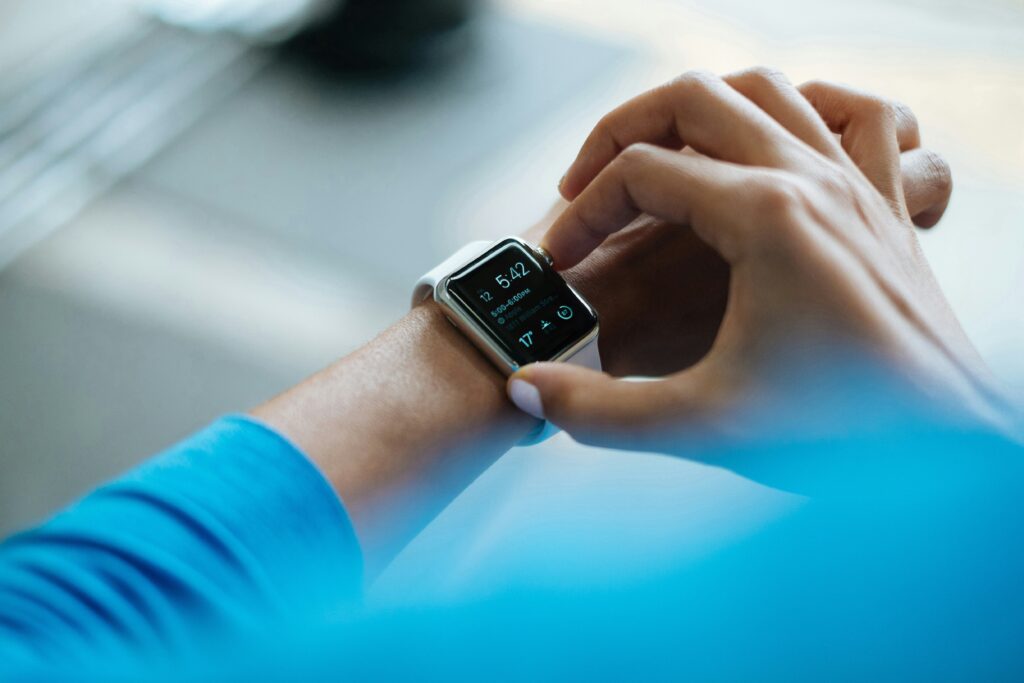
Introduction
The integration of wearable technology into healthcare has redefined how individuals monitor and manage their well-being. From tracking heart rate during workouts to analyzing sleep patterns, these devices provide continuous, real-time data that empowers users with actionable health insights. Unlike sporadic clinical tests, wearables enable users to observe deviations from their baseline metrics, offering personalized healthcare solutions through health data analysis. Companies like Fitbit, now part of Google, leverage health data analysis to provide users with insights into their fitness, sleep, and overall health, empowering them to make informed decisions about their well-being.
Health data analysis focuses on extracting valuable insights from wearable device data. This process not only transforms how individuals optimize fitness and sleep but also plays a critical role in detecting anomalies in their health early on. As wearable devices continue to advance, the future of personalized healthcare holds immense promise for proactive health management. This blog delves deeply into the methodologies, mechanisms, outcomes, and implications of health data analysis, guided by findings derived from wearable device studies.
Methodology
Health data analysis employs structured approaches to ensure meaningful insights are derived from raw data collected by wearable devices. This study utilized the CRISP-DM framework, a widely adopted methodology in data mining, to extract and evaluate health data.
1. CRISP-DM Framework
The CRISP-DM methodology comprises six iterative phases that promote continuous improvement and refinement:
- Business Understanding: Identifying healthcare challenges and opportunities.
- Data Understanding: Exploring attributes such as heart rate, sleep metrics, and physical activity records.
- Data Preparation: Cleaning and transforming data to remove noise and inconsistencies.
- Modeling: Developing predictive and analytical models to extract patterns.
- Evaluation: Assessing model performance for accuracy and interpretability.
- Deployment: Delivering insights through visualization tools and reports.
2. Data Collection and Preprocessing
The study gathered data from five respondents who used Apple Watch devices for monitoring physiological metrics. Despite privacy concerns and technological constraints limiting the sample size, the data offered valuable insights into individual health patterns.
| Respondent ID | Age | Gender | Number of Records |
|---|---|---|---|
| 11 | 24 | Female | 1,660,041 |
| 25 | 31 | Male | 3,679,617 |
Key Data Categories
- Heart Rate: Continuous monitoring during daily activities and workouts.
- Sleep Data: Tracking sleep duration, interruptions, and quality.
- Physical Activity: Recording energy expenditure and activity intensity.
3. Analytical Tools
The R programming language was utilized to process, visualize, and interpret the data. Libraries such as ggplot2 and tidyverse enabled elegant graph generation and reproducibility, while statistical models provided robust feature analysis.
Working: How Health Data Analysis Unfolds
Health data analysis integrates real-time data collection from wearable devices with advanced analytical techniques to uncover personalized insights.
1. Continuous Monitoring
Wearables collect physiological data such as heart rate and sleep metrics continuously, allowing for real-time updates. This consistent monitoring ensures deviations are captured effectively.
2. Feature Identification
To optimize analysis, features such as sleep duration, heart rate variability, and exercise records were selected based on their relevance to health outcomes. SHAP analysis was employed to pinpoint critical attributes, offering transparency in feature importance.
3. Challenges in Interpretation
Health data presents challenges such as noise and inconsistencies. Advanced preprocessing steps were implemented to mitigate these limitations and ensure high-quality outputs.
4. Visualization and Reporting
Data was visualized using R, with graphs illustrating trends and patterns across respondents’ metrics. Insights were shared with participants to facilitate informed health decisions.
Results: Insights from Health Data Analysis
1. Heart Rate Analysis
Heart rate records revealed trends during workouts, with age-based target zones guiding intensity recommendations.
| Age | Target Heart Rate Zone (BPM) |
|---|---|
| 20 | 100-170 |
| 30 | 95-162 |
2. Sleep Patterns
Sleep analysis highlighted interruptions and duration variability. Respondents who achieved optimal sleep showed better health outcomes compared to those with irregular sleep patterns.
| Respondent ID | Optimal Sleep (%) | Interruptions (Average) |
|---|---|---|
| 11 | 60% | 1x |
| 25 | 86% | 6-10x |
3. Physical Activity Metrics
Analyzing calories burned across workouts provided insights into variations in exercise intensity and heart rate ranges.
| Activity Type | Calories Burned | Heart Rate Range (BPM) |
|---|---|---|
| Functional Strength Training | 200-500 | 100-170 |
| Outdoor Walking | 150-300 | 80-120 |
Discussion: Implications and Insights
1. Benefits of Health Data Analysis
Health data analysis offers numerous advantages for individuals and healthcare providers:
- Optimized Fitness Routines: Heart rate monitoring during exercise ensures users work within safe and effective zones.
- Improved Sleep Quality: Identifying disruptions allows users to implement lifestyle changes for better rest.
- Early Detection of Anomalies: Proactive monitoring enables identification of potential health issues before symptoms manifest.
2. Challenges
Despite its promise, health data analysis faces hurdles:
- Privacy Concerns: Sensitive data requires robust security measures.
- Wearable Accuracy: Variability in readings needs validation.
- User Engagement: Sustaining interest in device usage over time remains challenging.
3. Opportunities for Advancement
Future research should explore:
- Integration with cognitive healthcare platforms for real-time alerts.
- Enhanced user interfaces to increase engagement with wearable devices.
Conclusion
Health data analysis marks a transformative approach to personalized healthcare. By leveraging wearable technology, individuals gain actionable insights into their fitness, sleep, and overall health. Despite challenges such as privacy and device accuracy, the potential for innovation in this field is immense. As wearable devices evolve, the integration of advanced analytical techniques will further enhance the precision and impact of health data analysis, paving the way for a healthier, more empowered population.
Reference:
Hrabovska, N.; Kajati, E.; Zolotova, I. A Validation Study to Confirm the Accuracy of Wearable Devices Based on Health Data Analysis. Electronics 2023, 12, 2536. DOI: https://doi.org/10.3390/electronics12112536.
License:
This work is licensed under the Creative Commons Attribution 4.0 International License (CC BY 4.0). To view a copy of this license, visit https://creativecommons.org/licenses/by/4.0/.